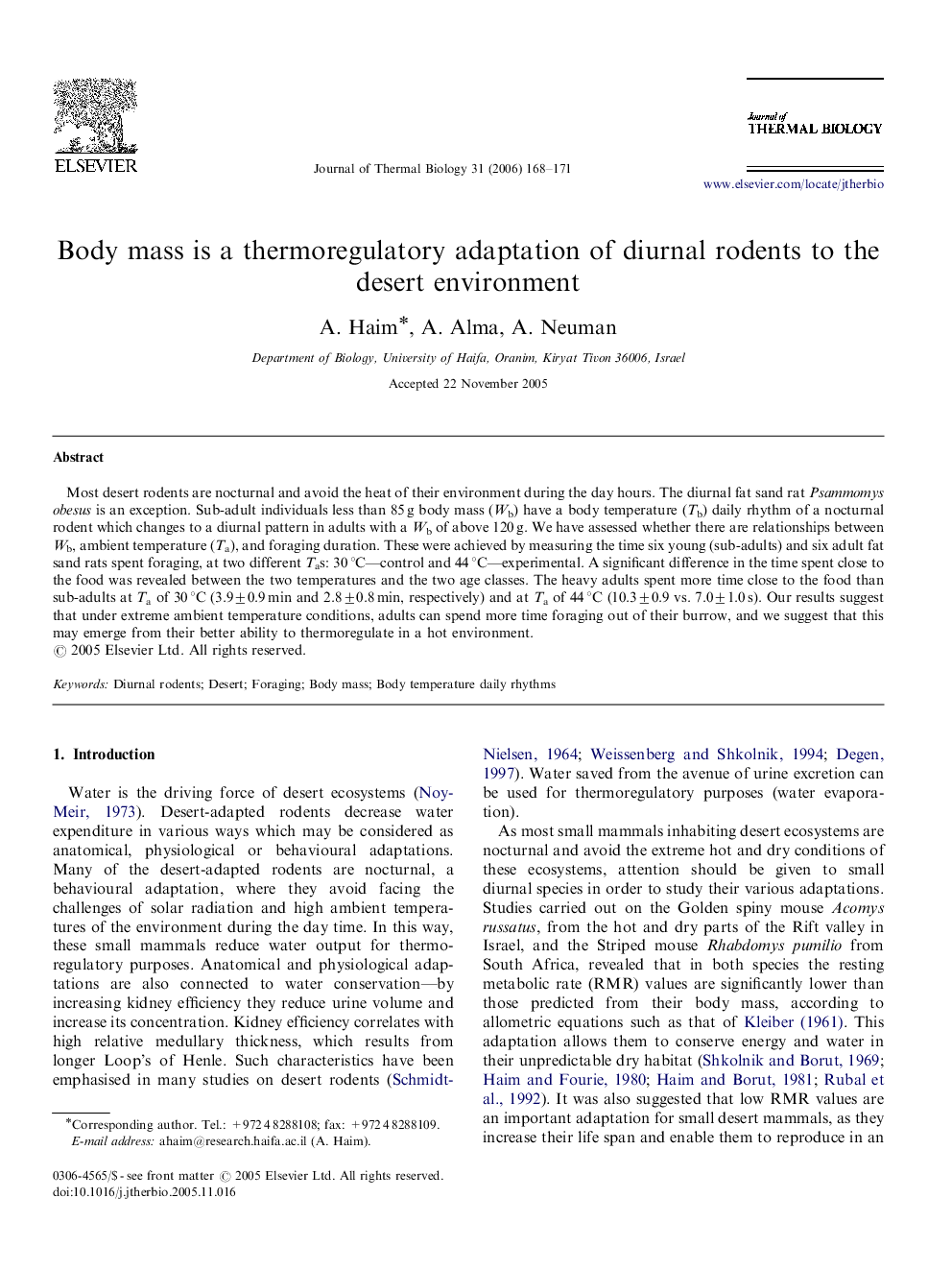| Article ID | Journal | Published Year | Pages | File Type |
|---|---|---|---|---|
| 2843776 | Journal of Thermal Biology | 2006 | 4 Pages |
Most desert rodents are nocturnal and avoid the heat of their environment during the day hours. The diurnal fat sand rat Psammomys obesus is an exception. Sub-adult individuals less than 85 g body mass (Wb) have a body temperature (Tb) daily rhythm of a nocturnal rodent which changes to a diurnal pattern in adults with a Wb of above 120 g. We have assessed whether there are relationships between Wb, ambient temperature (Ta), and foraging duration. These were achieved by measuring the time six young (sub-adults) and six adult fat sand rats spent foraging, at two different Tas: 30 °C—control and 44 °C—experimental. A significant difference in the time spent close to the food was revealed between the two temperatures and the two age classes. The heavy adults spent more time close to the food than sub-adults at Ta of 30 °C (3.9±0.9 min and 2.8±0.8 min, respectively) and at Ta of 44 °C (10.3±0.9 vs. 7.0±1.0 s). Our results suggest that under extreme ambient temperature conditions, adults can spend more time foraging out of their burrow, and we suggest that this may emerge from their better ability to thermoregulate in a hot environment.
